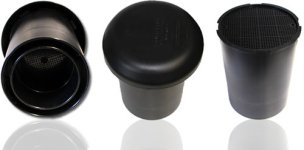Pettrix
Platinum Member
I can't imagine that mosquitoes eggs or larvae could survive in a septic system. We use all of our plumbing so having mosquitoes using the traps to lay eggs is not an issue.
Later,
Dan
Not only can they survive in a septic system but it is a large enough problem that many county codes have remedies to address this issue. Mosquitoes can and will breed in the most disgusting and filth ridden water you can find. Conventional septic systems are basically pools of standing water. There is no oxygen in the system. Septic tanks are the perfect environment for mosquitoes to breed in.
Roof Rats can also make their way through the vent stack and into your home or septic tank. They are excellent swimmers and I've seen it myself, rats showing up in toilet bowls.
According to the CDC: "SEPTIC TANKS can produce hundreds to thousands of mosquitoes each day. These mosquitoes might transmit viruses like dengue or West Nile that can cause serious illness." One source of entry is the vent pipe and the lack of a vent pipe screen. http://www.cdc.gov/dengue/resources/pdfs_edu_trng/septicTank/214629ASepticTankFacSheet508english.pdf
"Mosquitoes were flying down the vent stack, into the septic tank where they were breeding."
